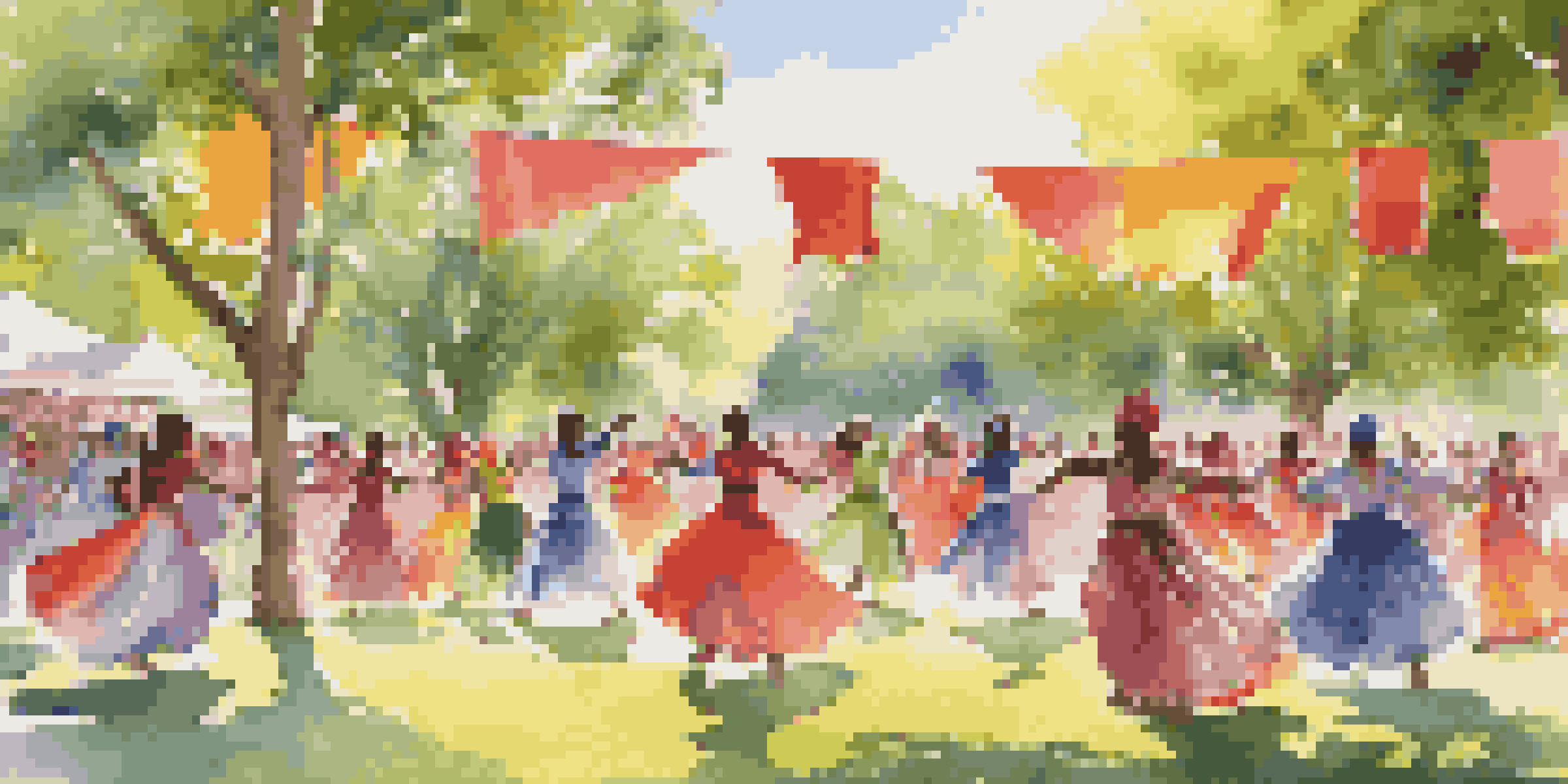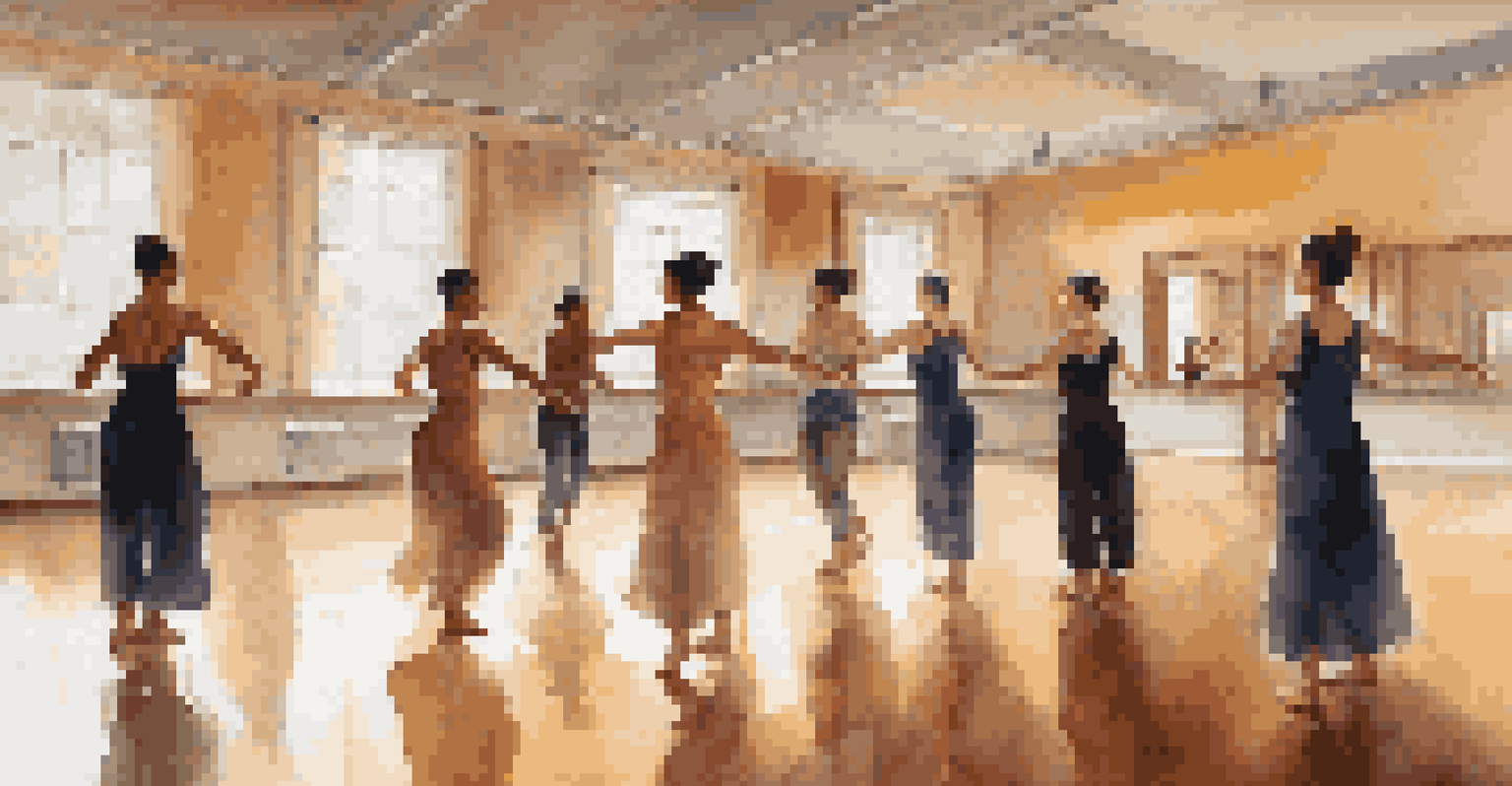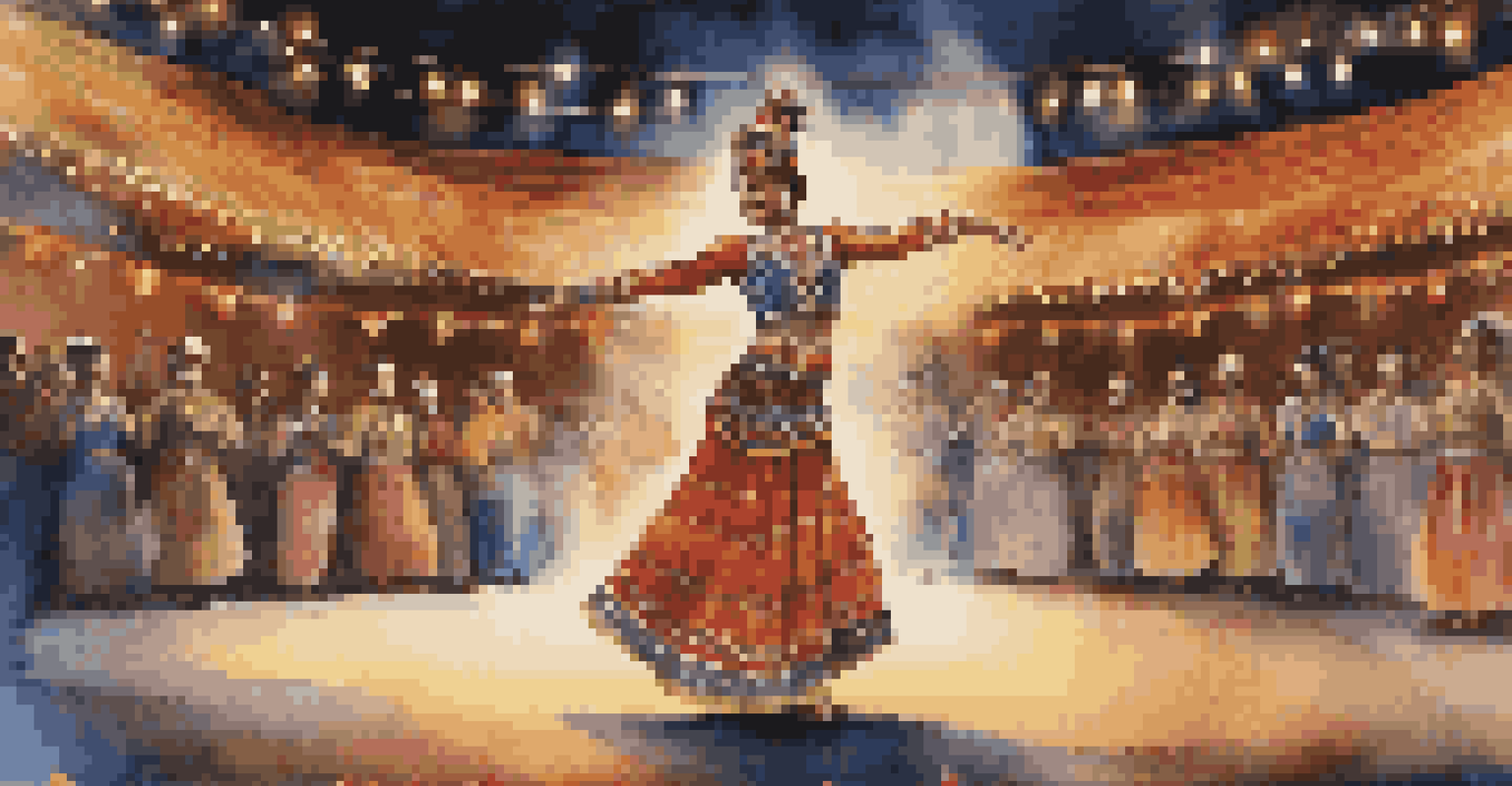The Role of Dance in Building Cultural Identity and Pride

Dance: A Universal Language of Expression
Dance transcends language barriers, allowing people to express emotions and stories without words. It serves as a universal medium that connects individuals and communities, enabling them to share their experiences, traditions, and values. For instance, a joyful celebration or a somber remembrance can be beautifully conveyed through movement, making dance an essential element of cultural communication.
Dance is the hidden language of the soul.
Moreover, the rhythm and style of dance often reflect the unique heritage of a community. Each culture has its distinct dance forms—think of the vibrant samba from Brazil or the graceful ballet from Europe. These dances not only entertain but also tell the stories of the people and their histories, reinforcing a sense of belonging and identity.
By participating in dance, individuals can forge deeper connections with their cultural roots. Whether it’s through learning traditional steps or performing in community gatherings, dance becomes a powerful tool for fostering pride and unity among members of a culture.
Cultural Heritage: Preserving Traditions Through Dance
Dance acts as a living archive, preserving cultural traditions and narratives that might otherwise fade away. Generations pass down specific dances, teaching the younger ones not just the movements, but the stories and meanings behind them. This transmission of knowledge ensures that cultural identity remains vibrant and relevant in an ever-changing world.

For example, indigenous dances often incorporate elements that honor nature and ancestral spirits, serving as a reminder of the community’s connection to their heritage. These practices are not just performances; they are rituals that reinforce cultural values and emphasize the importance of maintaining one’s roots.
Dance as a Cultural Connector
Dance serves as a universal language that connects individuals and communities, allowing them to express emotions and share cultural narratives.
In many cultures, dance is integrated into festivals and ceremonies, marking significant life events like weddings and initiations. By participating in these dances, individuals reaffirm their cultural identity and contribute to the collective memory of their community.
Building Community through Dance Participation
Dance brings people together, fostering a sense of community and shared identity. When individuals join a dance group or participate in cultural events, they connect with others who share similar backgrounds and experiences. This communal aspect of dance creates a supportive environment where people can celebrate their heritage and express their pride.
To watch us dance is to hear our hearts speak.
For instance, community dance classes often encourage participation from all age groups, making it a family-friendly activity. These gatherings allow individuals to bond over shared movements and experiences, creating lasting friendships and networks that strengthen the cultural fabric of the community.
Additionally, community performances can showcase diverse dance styles, attracting audiences from various backgrounds. This interaction helps promote understanding and appreciation for different cultures, ultimately fostering a more inclusive society.
Dance as a Tool for Cultural Advocacy
Beyond entertainment, dance can serve as a powerful means of advocacy for cultural issues. Many artists use their performances to address social injustices, raise awareness, or inspire change. This transformative aspect of dance can draw attention to important cultural narratives that need to be highlighted.
For example, dance troupes often participate in cultural festivals or events that focus on preserving endangered traditions. By performing these dances, they not only entertain but also educate the audience about the importance of cultural preservation and the threats faced by various communities.
Preserving Heritage Through Dance
Dance acts as a living archive, preserving cultural traditions and ensuring that stories and identities are passed down through generations.
Moreover, dance can empower marginalized groups, giving them a platform to express their identities and experiences. Through dance, individuals can reclaim their narratives and assert their cultural pride in a world that may often overlook or dismiss them.
The Evolution of Dance and Cultural Identity
Dance, like culture, is not static; it evolves over time, absorbing new influences and adapting to contemporary contexts. This evolution can help keep cultural identity fresh and relevant, appealing to younger generations who may seek a connection to their roots in modern ways. It’s fascinating to see how traditional dance forms can blend with contemporary styles, creating something entirely new yet rooted in history.
Take hip-hop, for instance, which has its origins in African American culture but has grown into a global phenomenon. While it may have transformed significantly, it still retains elements of cultural storytelling, showcasing the resilience and creativity of its roots.
This dynamic nature of dance encourages ongoing dialogue about cultural identity, allowing communities to redefine themselves while still honoring their heritage. It’s a beautiful reminder that cultural pride can coexist with innovation, creating a rich tapestry of artistic expression.
Dance: A Pathway to Cultural Education
Incorporating dance into educational programs can significantly enhance cultural awareness and understanding. Schools and community organizations can offer dance classes that focus on the cultural significance of various styles, helping students appreciate the richness of different heritages. This hands-on approach not only teaches moves but also the history and meaning behind them.
For instance, learning traditional dances from around the world can foster respect and appreciation for diversity. Students gain insight into the customs, values, and stories of other cultures, promoting empathy and understanding in an increasingly globalized society.
Empowering Communities with Dance
Participation in dance fosters community bonds and provides a platform for cultural advocacy, enabling marginalized voices to reclaim their narratives.
By engaging with dance education, individuals can develop a deeper connection to their own cultural heritage while learning about others. This mutual appreciation fosters pride and respect, encouraging a more harmonious coexistence among diverse communities.
The Future of Dance in Cultural Identity and Pride
As society continues to change, the role of dance in shaping cultural identity will remain vital. Emerging technologies, such as social media, provide new platforms for sharing dance and cultural stories, reaching wider audiences than ever before. This connectivity can enhance the visibility of diverse cultures, allowing them to thrive in the digital age.
Moreover, dance festivals and competitions are increasingly embracing multiculturalism, showcasing a variety of styles and traditions. This recognition not only validates different forms of expression but also encourages collaboration between artists from various backgrounds.

Ultimately, the future of dance lies in its ability to adapt while retaining its core purpose of fostering cultural identity and pride. As communities continue to celebrate their uniqueness through dance, we can anticipate a vibrant tapestry of artistic expression that honors the past while embracing the future.